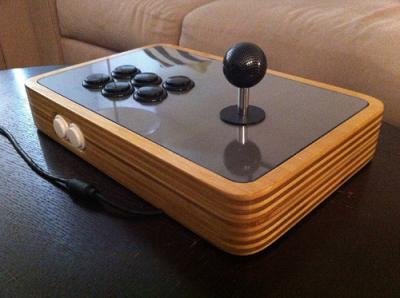A DIY Arcade Stick from Top 10 Raspberry Pi Projects for Beginners

Retro gaming is one of the most popular uses for the Raspberry Pi, and there are now a multitude of ready-to-go SD card images packed with emulator software (though most require sourcing your own ROM files). The days of installing emulators onesy-twosey are behind us; and the Pi Store (an online app store for Raspberry Pi, recommended in earlier versions of this guide) was shuttered in 2015.
Comments
Agreed! My first Pi became a RetroPie console immediately and it’s the best money I never spent on a NES Classic. If Nintendo hadn’t been crap at inventory management they would have gotten my money and I would have been the poorer for it. As it is I’m diving back into FFVI, Secret of Mana, and all the other classics the NES Classic can’t touch. Phooey on you, Nintendo!
I made a retro console with a Pi 2, it’s amazing and great fun, but I made some observations: It runs better with a Pi 3. Using a USB WiFi dongle isn’t a good idea as you occasionally end up with a power usage warning that slows down the emulator, so if you’re not using internal storage, (mSD cards a perfect), use a wired connection for the best result. Learn how to console into the machine so that you can change the config for the individual emulators, universal controller mappings are a pain and updating each console via the config file will give you the best layouts: the wiki pages for each console on Git gives you the expected layout.
Another cool project is a Lossless audio player, (this is similar to the web radio player). You can easily buy a DAC for the Pi, (I purchased mine from iQaudIO with a case), and install something called Volumio. This is a native FLAC (and most everthing else), player that with the DAC plays at a really nice quality for the price, it’ll sit on a network/play via internal storage or USB and has a Spotify plug in and also web radio.
I attempted the DIY Amazon Echo project last month, because I love the idea of a digital assistant I can have some control over. I got as far as getting the Pi running headless and connected to wifi... then lost the network connection, spent an hour failing to get it back, and gave up. I feel like I should turn in my geek card. Still, lots of cool projects here, maybe even cool enough to get me to try again.
Got my Retropie finished after upgrading to the Pi 3, but I need to figure out what to do with the Pi 1. Was thinking of making a projector, but the only guides involved still cost like, $60 or more. Maybe I’ll do the VPN, though...